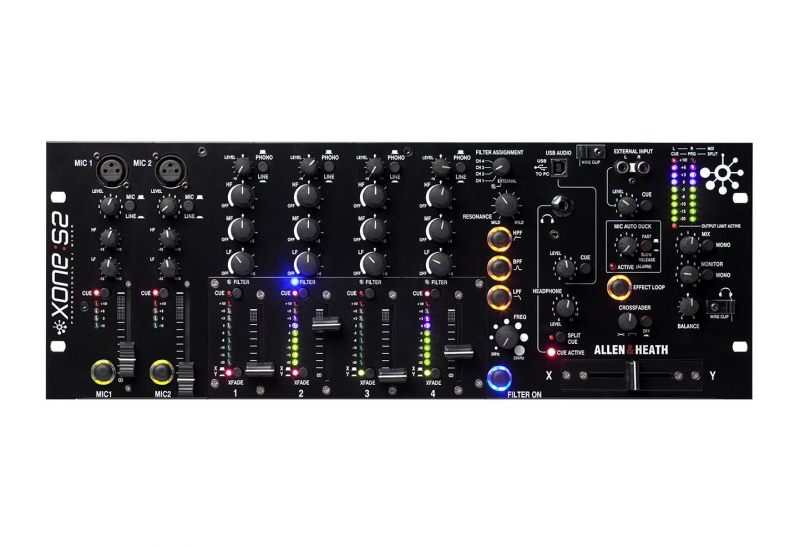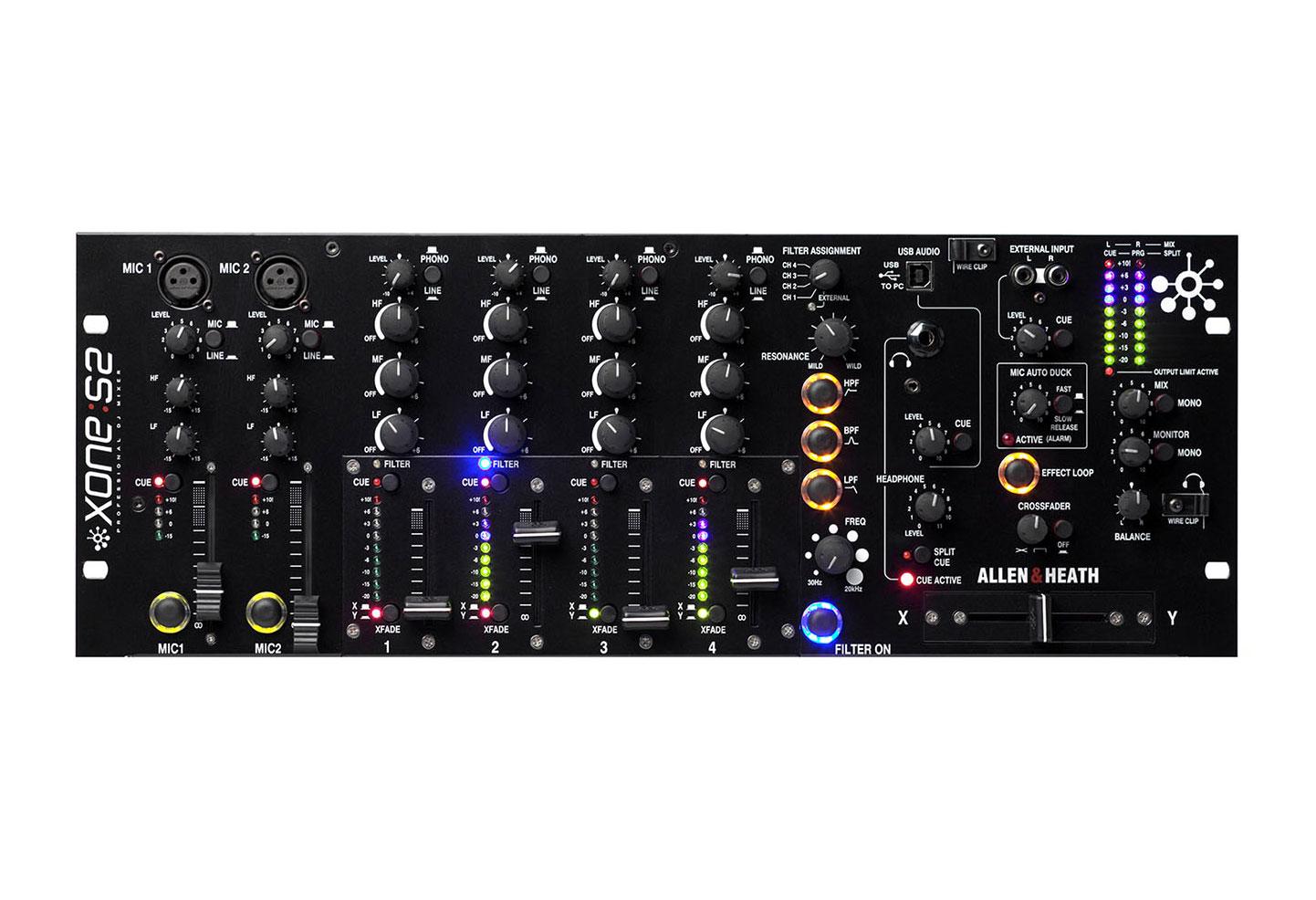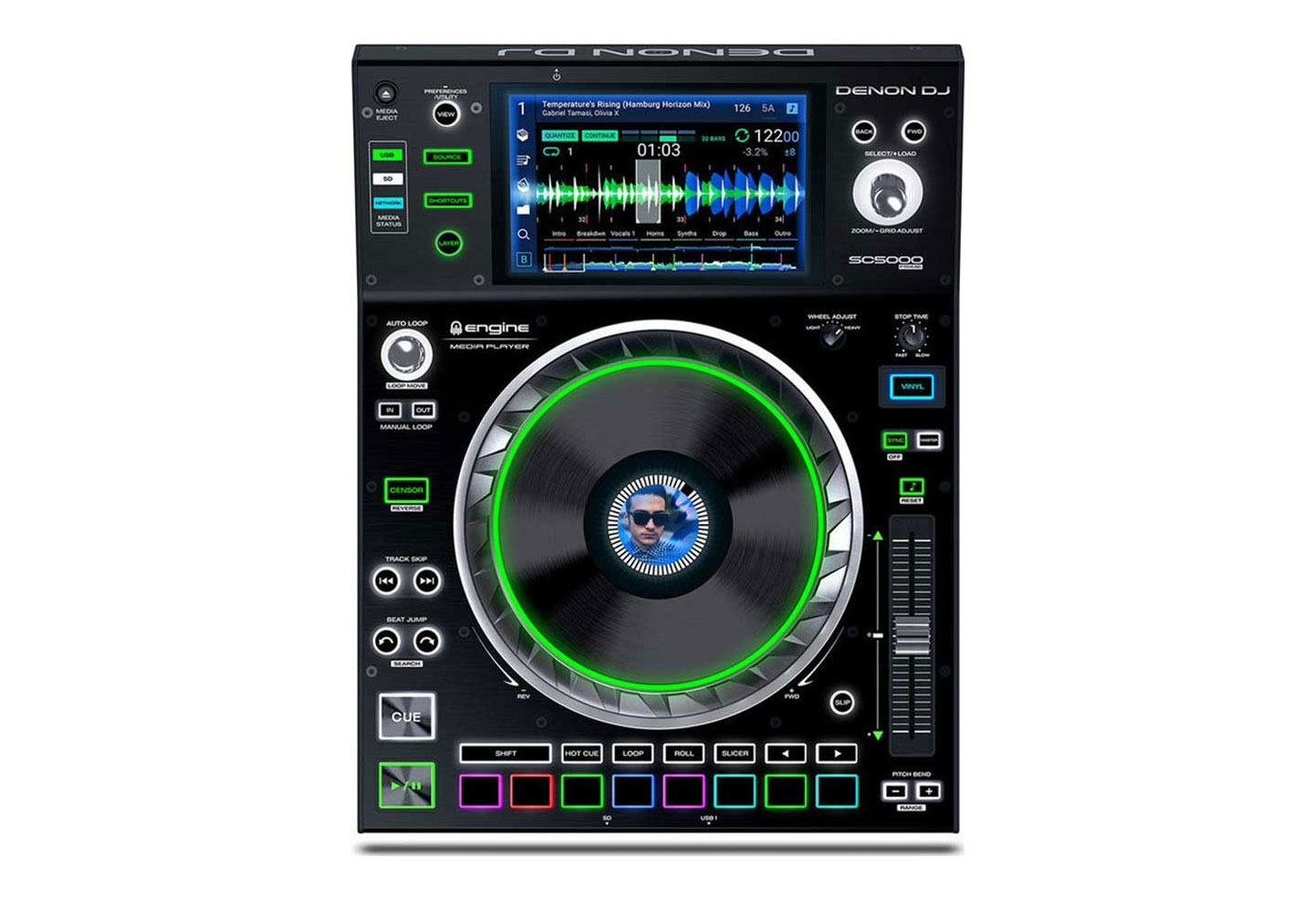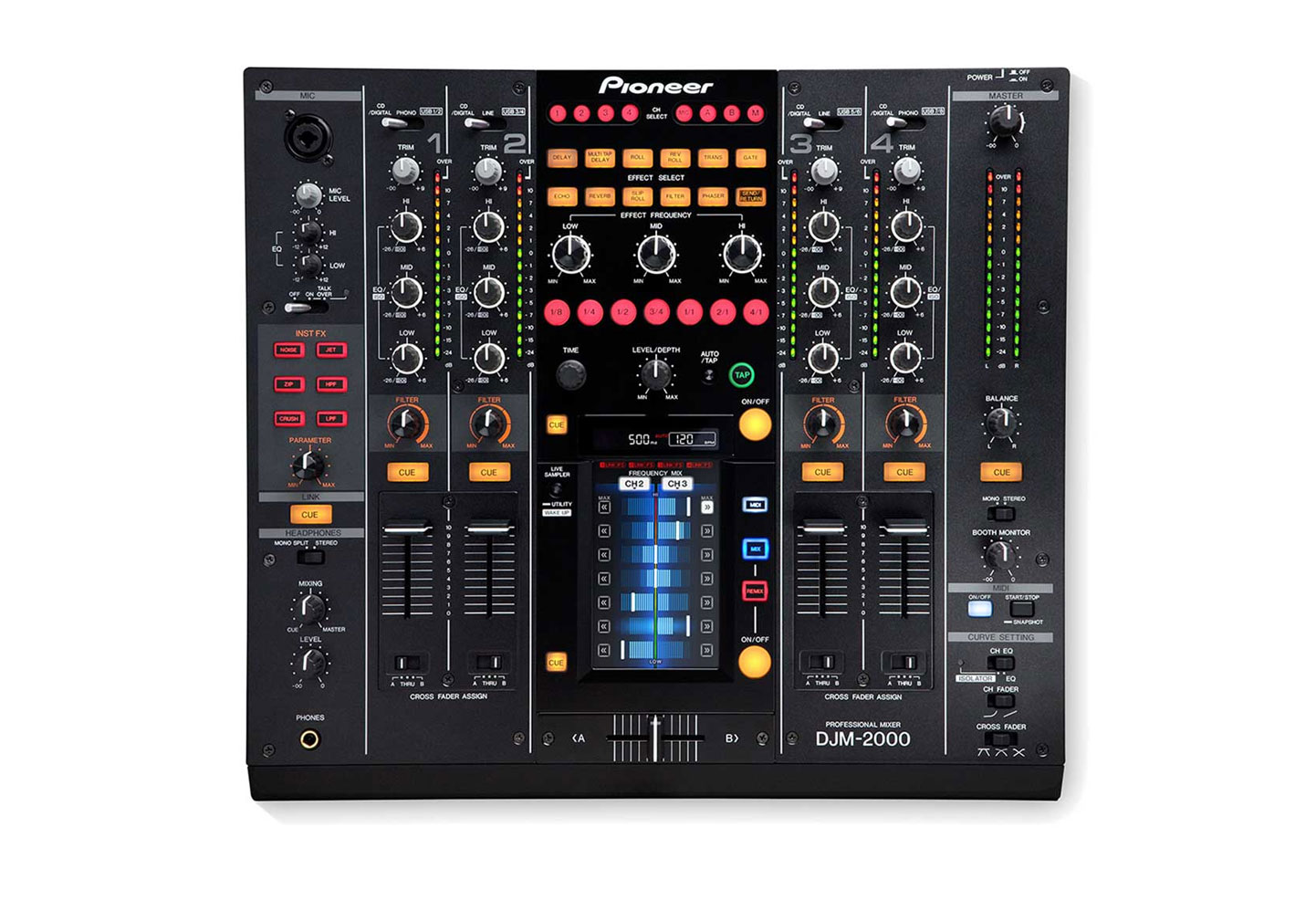Mixing console for sale

|
Are you a music enthusiast or a professional in the audio industry looking to take your sound mixing skills to the next level? Look no further! In this comprehensive guide, we will delve into the world of mixing consoles and help you discover the perfect companion for your audio mixing needs. Whether you're a DJ, a sound engineer, or a musician, having the right mixing console is crucial for achieving the perfect balance and bringing out the best in your sound. We understand that finding the right mixing console can be overwhelming, with a plethora of options available in the market. That's why we've compiled this guide to provide you with valuable insights, expert recommendations, and key factors to consider when making your purchase. From analog to digital consoles, we've got you covered. So, let's embark on this journey together and find your ultimate audio mixing companion that will elevate your sound to new heights!
Understanding the different types of mixing consolesMixing consoles come in various types, each with its own unique features and functionalities. Understanding the differences between these types will help you make an informed decision when choosing the right console for your needs. Analog Mixing ConsolesAnalog mixing consoles have been the industry standard for decades. These consoles use physical knobs, faders, and buttons to control and manipulate audio signals. They provide a tactile and intuitive mixing experience, allowing engineers to have precise control over every aspect of the sound. Analog consoles are known for their warm and rich sound quality, which is favored by many audio professionals and musicians. However, they can be bulky, require regular maintenance, and may have limited routing and processing options compared to their digital counterparts. Digital Mixing ConsolesDigital mixing consoles have revolutionized the audio industry with their advanced features and flexibility. These consoles use digital signal processing (DSP) technology to manipulate and mix audio signals. They offer a wide range of routing options, built-in effects, and the ability to save and recall presets, making them highly versatile and efficient. Digital consoles also often come with intuitive user interfaces and touchscreen displays, allowing for easy navigation and control. While they may lack the warmth and character of analog consoles, digital mixing consoles provide unmatched convenience, portability, and a vast array of features that can enhance your mixing workflow. |
 |
Hybrid Mixing ConsolesHybrid mixing consoles combine the best of both worlds by incorporating analog and digital technologies. These consoles offer the warmth and tactile control of analog consoles, along with the advanced features and flexibility of digital consoles. Hybrid consoles often have analog inputs and outputs, as well as digital processing capabilities. This allows users to achieve the desired sound character while taking advantage of digital effects, routing options, and recallable presets. Hybrid consoles are an excellent choice for those who want a balance between the traditional analog sound and the modern digital conveniences. Determining which type of mixing console is right for you depends on your specific needs, preferences, and budget. The next section will explore some key features to consider when choosing a mixing console. Key features to consider when choosing a mixing consoleWhen selecting a mixing console, several key features should be taken into consideration to ensure it meets your requirements and enhances your mixing workflow. Let's explore these essential features in detail: Number of Channels and BusesOne of the primary considerations when choosing a mixing console is the number of channels and buses it offers. The number of channels determines how many individual audio sources you can connect and control simultaneously. Buses, on the other hand, allow you to group and route multiple channels together for processing or submixing. It's essential to assess your current and future needs to determine the appropriate number of channels and buses for your mixing console. Consider the types of projects you work on, the size of the events or venues you typically handle, and the number of inputs and outputs you require. Built-in Effects and Processing PowerAnother crucial feature to consider is the built-in effects and processing power of the mixing console. Many digital consoles come with a wide range of built-in effects, such as reverbs, delays, compressors, and EQs. These effects can save you time and money by eliminating the need for external outboard gear. Additionally, the processing power of the console determines how many effects and plugins it can handle simultaneously without any performance issues. If you require extensive signal processing capabilities, ensure that the console you choose has sufficient processing power to meet your needs. Connectivity OptionsThe connectivity options of a mixing console are vital, as they determine how you can integrate the console with other equipment and devices. Consider the types and number of inputs and outputs the console provides. Analog consoles usually offer XLR and TRS connectors for audio inputs and outputs, while digital consoles may also have AES/EBU, ADAT, or Dante connectivity options. Additionally, check if the console has USB or Ethernet ports for connecting to computers or networked audio systems. It's essential to ensure that the console's connectivity options align with your existing equipment and future expansion plans. User Interface and WorkflowThe user interface and workflow of a mixing console significantly impact your comfort and efficiency during a mixing session. Look for consoles with intuitive and easy-to-navigate user interfaces, preferably with touchscreen displays for quick access to settings and parameters. Consider the layout and arrangement of the controls, as well as the visibility of the labels and indicators. It's also helpful to check if the console supports customizable layouts or user-defined presets to tailor the workflow to your specific needs. A well-designed user interface can streamline your mixing process and allow you to focus on the creative aspects of your work. |
 |
Expandability and UpgradabilityAs your audio mixing needs grow, it's essential to choose a mixing console that offers expandability and upgradability. Check if the console has expansion slots or options to add additional input/output cards, allowing you to increase the number of channels or connect to different types of audio interfaces. Some consoles also support firmware upgrades, which can unlock new features and improve the console's performance over time. Investing in an expandable and upgradable console ensures that your mixing companion can evolve with your needs and adapt to future technologies. Considering these key features will help you narrow down your options and find a mixing console that aligns with your specific requirements. In the next section, we will explore how to determine your budget for a mixing console. Determining your budget for a mixing consoleSetting a budget is an essential step when purchasing a mixing console. The price range for mixing consoles can vary significantly, depending on the type, brand, features, and quality. By determining your budget upfront, you can focus your search on consoles that fall within your price range and avoid overspending or compromising on essential features. Assessing Your Needs and RequirementsBefore setting a budget, it's crucial to assess your needs and requirements. Consider the type of projects you work on, the scale of your setups, and the level of professionalism you aim to achieve. If you're a hobbyist or a small-scale musician, you may not require a high-end console with advanced features. On the other hand, if you're a professional sound engineer working on large-scale events, investing in a feature-rich console may be necessary. Understanding your needs and requirements will help you prioritize the features that are crucial for your workflow and determine an appropriate budget range. Researching Price RangesOnce you have a clear understanding of your needs, it's time to research the price ranges of mixing consoles. Start by exploring different brands and models to get an idea of the average prices for consoles with the features you require. Consider both new and used consoles, as used consoles can often offer excellent value for money. Online marketplaces, manufacturer websites, and audio equipment retailers are great sources for researching price ranges. Make a note of the price ranges that align with your budget and narrow down your options accordingly. Evaluating Long-Term InvestmentWhen setting a budget for a mixing console, it's essential to consider it as a long-term investment. While it may be tempting to go for the cheapest option available, keep in mind that a high-quality console can last for many years and provide a better return on investment in terms of sound quality, durability, and future-proofing. Balance your budget constraints with the long-term benefits and consider if investing a little more upfront can save you from needing to upgrade or replace the console sooner than anticipated. Additional ExpensesIn addition to the cost of the mixing console itself, it's essential to factor in any additional expenses that may arise. Consider the cost of accessories such as cables, cases, and racks. If you opt for a digital console, you may also need to budget for a computer or tablet for remote control and software updates. Additionally, consider any potential maintenance or repair costs that may arise over time. By accounting for these additional expenses, you can ensure that your budget covers the complete cost of your audio mixing setup. Setting a realistic budget and considering your long-term needs will help you make an informed decision when purchasing a mixing console. The next section will explore how to research and compare different mixing console brands. Researching and comparing different mixing console brandsWith numerous mixing console brands available in the market, researching and comparing their offerings is crucial to find the right one for your needs. Here are some steps to guide you through the research process: Identify Your Preferred BrandsStart by identifying your preferred mixing console brands. Consider factors such as reputation, customer reviews, and recommendations from industry professionals. Some well-known and reputable brands in the audio industry include Yamaha, Allen & Heath, Behringer, Midas, Soundcraft, and DiGiCo, among others. Research each brand's range of mixing consoles and their target audience to see if they align with your requirements. Explore the Product RangeOnce you have identified your preferred brands, explore their product ranges in detail. Visit the manufacturer's websites to gather information about the different models, specifications, and features. Pay attention to the types of consoles they offer (analog, digital, or hybrid), the number of channels and buses, the built-in effects and processing capabilities, and the connectivity options. Take note of any unique features or technologies that set each brand apart from the competition. Read Customer Reviews and TestimonialsCustomer reviews and testimonials provide valuable insights into the real-world performance and reliability of mixing consoles. Look for reviews on reputable audio equipment websites, forums, and social media groups. Pay attention to both positive and negative reviews, as they can give you a balanced perspective on the strengths and weaknesses of each brand and model. Consider any recurring themes or issues mentioned in the reviews and weigh them against your priorities and requirements. Consider After-Sales Support and WarrantiesAfter-sales support and warranties are essential factors to consider when choosing a mixing console brand. Check if the brand offers comprehensive customer support, including technical assistance, software updates, and user forums. Look for warranties that cover a reasonable period and ensure that repairs or replacements can be easily obtained if needed. A brand with a strong support system can provide peace of mind and ensure a smooth experience throughout your ownership of the mixing console. Seek Expert OpinionsIf possible, seek expert opinions from audio professionals or experienced individuals in the industry. They can provide valuable insights and recommendations based on their firsthand experience with different mixing console brands. Attend industry events, conferences, or workshops where you can network with professionals and gain insights into their preferred brands and models. Their expertise can help you make an informed decision and potentially uncover options that you may have overlooked during your research. By following these steps, you can gather comprehensive information about different mixing console brands and make an educated decision based on your requirements, preferences, and budget. The next section will explore the importance of reading customer reviews and testimonials. Reading customer reviews and testimonialsCustomer reviews and testimonials play a crucial role in the decision-making process when purchasing a mixing console. They provide insights into the real-world experiences of other users and can help you gauge the reliability, performance, and usability of a specific model or brand. Here's why reading customer reviews and testimonials is essential: Unbiased FeedbackCustomer reviews and testimonials provide unbiased feedback about the strengths and weaknesses of a mixing console. Unlike promotional material or manufacturer descriptions, customer reviews offer insights from individuals who have used the console in real-world scenarios. They can highlight issues or limitations that may not be apparent from the manufacturer's specifications alone. By considering a wide range of reviews, you can form a more balanced and informed opinion about a specific console. Real-World PerformanceWhile manufacturers strive to present their products in the best light, customer reviews offer a glimpse into the real-world performance of a mixing console. Users can share their experiences regarding the sound quality, ease of use, durability, and other important aspects of the console. Real-world performance is often more critical than technical specifications alone, as it reflects how the console functions in practical applications and setups. Reading customer reviews can help you understand how a console performs in various scenarios and determine its suitability for your specific needs. Reliability and LongevityCustomer reviews can provide insights into the reliability and longevity of a mixing console. Users often share their experiences regarding any technical issues, repairs, or malfunctions they have encountered. By considering these reviews, you can assess the overall build quality, reliability of components, and the likelihood of experiencing any problems throughout the lifespan of the console. Reliability and longevity are essential factors to consider, as a console that requires frequent repairs or replacements can be costly and disruptive to your workflow. Personal Preferences and Use CasesEvery individual has unique preferences and use cases when it comes to audio mixing. Reading customer reviews allows you to find reviewers who have similar needs and priorities as yours. By focusing on these reviews, you can gain insights into how well the console aligns with your specific requirements. For example, if you're a live sound engineer, you may find reviews from professionals who have used the console in a similar setting. Their feedback can help you determine if the console is suitable for live sound applications and meets the demands of your workflow. Identifying Consistent FeedbackWhen reading customer reviews, it's important to look for consistent feedback or recurring themes. If multiple reviewers mention the same positive or negative aspects, it's likely that those aspects are accurate representations of the console's performance. Pay attention to any patterns in the reviews and consider how they align with your priorities. For example, if several reviewers praise the console's ease of use and intuitive workflow, it's a good indicator that the console excels in those areas. |
 |
